by Mitch Hauschildt, MA, ATC, CSCS
Lots of us deal with Patellofemoral Knee Pain (PFP). We either suffer from it ourselves or we deal with it with our patients or clients. It is prevalent among active individuals who have lost some mobility, stability or motor control somewhere along the line.
It is typically characterized by generalized knee pain that isn’t very specific with regards to a location, but oftentimes runs along the lateral side of the knee. We refer to it as Patellofemoral pain, because it is caused by the patella (knee cap) not aligning well with the groove on the end of the femur.
For many years, we thought that it was the fault of the Vastus Medialis (VMO) muscle. It was believed that if it wasn’t functioning properly, that it would cause the patella to slide laterally and not slide within the femoral groove. It is now much more commonly accepted that PFP is caused by poor hip and/or foot function which places the femur into a valgus position (sliding inward) and tibial rotation, thus causing the poor contact between the patella and femur.
There are a lot of ways to approach correcting this problem between exercise, mobility work, manual therapy, and of course kinesiology tape. Today, we are going to focus on using tape to assist in the rehab process.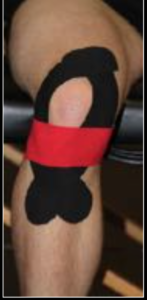
- Knee Pain Application. This application is a staple for the Rocktape methodology. We teach this in our FMT Basic course. It is not designed to fix any dysfunction and not specific to PFP. It is applied to disrupt the local pain receptors and improve propioceptive feedback and overall motor control. This technique is an entry level approach and should be viewed as a first line of defense. It is effective, but also non-specific.
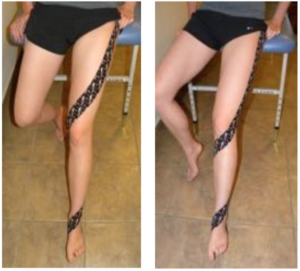
- Helical Application. This is where things start to get rather fun in my book. As we know, PFP is a product of the foot and hip. With a helical pattern, we are connecting the two areas. This application works along the helical fascial pattern that Stecco describes and does a great job of limiting tibial rotation and knee valgus.
- Hip Tweak combined with Arch Tab Application. If the Helical application isn’t enough help, then we move onto this more advanced technique. It is more aggressive and provides a lot more feedback to the entire lower extremity. The hip tweak taping technique has been described in detail in a previous blog post and the beauty of it is that by combining 4 inch tape with skin drag into hip external rotation does a fantastic job of controlling the hip and femur. At the foot, the tab taping technique is my favorite way of controlling foot pronation by utilizing both the neurosensory feedback of the tape with mechanical support thanks to the stretch being taken 0ut of the tape.
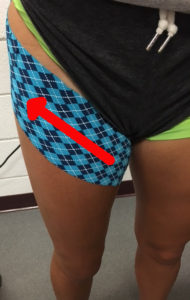
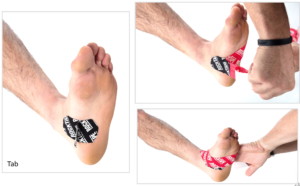
- Tweak Taping. Tweak taping is always a favorite
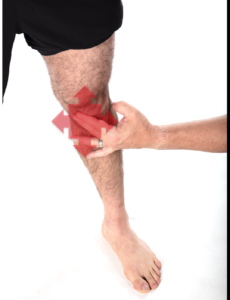
application of mine. It isn’t usually my first application for PFP, but it can be a great way to control pain and function. If PFP is being caused by a peripheral nerve entrapment, it is likely along the Saphenous nerve. The Saphenous nerve runs along the inside of the leg and branches off to cover the front of the knee. Typical entrapment sites that can be related to PFP are where the nerve comes out from under the adductor muscle group and also where it branches off and wraps around the front of the knee. Tweak taping takes a little bit more time to locate the entrapment and the proper skin drag direction to improve the pain and function, but for the person who has not responded well to other treatments, this can be a fantastic solution.
For more information on taping options for PFP, see the video below:
The take home here is that you have options for dealing with PFP. Remember that tape should not be your only solution for treating PFP pain. This is just a start. You need to locate the root cause of the pain and fix the dysfunction with manual therapy and exercise.


Awesome stuff Mitch!